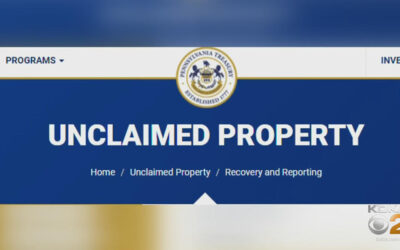Welcome to our comprehensive guide on how to get a delinquency off your credit report. Dealing with delinquencies can be stressful, but taking action is essential for improving your creditworthiness. In this article, we’ll walk you through the process of removing delinquencies from your credit report, providing you with practical steps and useful tips along the way. We will provide you with valuable insights and strategies to help you navigate the process of removing delinquencies from your credit report. Our goal is to empower you with the knowledge and tools to take control of your credit history and improve your creditworthiness.
What are Delinquencies on Your Credit Report?
Delinquencies on your credit report can have a significant impact on your financial health. They are negative entries that show up when you’ve made late payments, defaulted on loans, or have collection accounts. These delinquencies can bring down your credit scores and limit your borrowing options.
Late payments happen when you fail to make payments on time, while defaults occur when you’ve missed payments for an extended period, leading to the lender considering your account as uncollectible. Collection accounts, on the other hand, are created when your overdue debts are sent to collection agencies for recovery.
Having delinquencies on your credit report can lower your credit scores and make it challenging to obtain new credit or loans. Lenders may see you as a risk and be hesitant to lend you money. Additionally, even if you do get approved for credit, you might face higher interest rates and less favorable terms.
Key points to remember:
- Delinquencies on your credit report include late payments, defaults, and collection accounts.
- They can harm your credit scores and limit your borrowing options.
- Lenders may consider you a risk and offer less favorable terms or higher interest rates.
Read More: How to Buy Tax Delinquent Property in Alabama – Step-by-Step Guide
How to get a delinquency off your credit report?
Assess Your Credit Report
To get started on removing delinquencies from your credit report, the first step is to obtain a copy of your credit report and review it carefully. Your credit report contains valuable information about your financial history, including any delinquencies that may be affecting your credit scores.
Obtaining your credit report is easier than you might think. You are entitled to a free copy of your credit report once every 12 months from each of the three major credit reporting agencies: Equifax, Experian, and TransUnion. You can request your report online, by phone, or by mail. Remember to provide accurate information to ensure a smooth process.
Once you have your credit report in hand, take the time to review it thoroughly. Look for any delinquencies or negative entries that may be listed. Pay attention to details such as late payments, defaults, and collection accounts. These are the areas where you will want to focus your efforts for removal.
Keep an eye out for any discrepancies or errors on your credit report. Mistakes can happen, and they could be negatively impacting your credit scores. If you spot any inaccuracies, it’s essential to address them promptly.
Key Points:
- Obtain a free copy of your credit report from Equifax, Experian, and TransUnion once every 12 months.
- Review your credit report carefully for delinquencies, late payments, defaults, and collection accounts.
- Look for any discrepancies or errors and take steps to address them.
Identify and Verify Delinquencies
Now that you have your credit report in hand, it’s time to identify and verify the delinquencies that are listed. This step is crucial in ensuring the accuracy of the information and understanding the extent of the impact on your credit scores.
Take a close look at each delinquency listed on your credit report. Identify the creditors or lenders associated with each entry. Make note of the account numbers, dates, and amounts owed. This information will help you when communicating with the relevant parties to resolve the delinquencies.
To verify the accuracy of the delinquencies, gather any supporting documentation you may have. This could include account statements, payment history records, or any correspondence you’ve had with the creditor. Having this documentation will be useful when disputing inaccuracies or negotiating with creditors later on.
It’s essential to reach out to the respective creditors to verify the details of the delinquencies. Contact them directly and request information about the specific accounts in question. Ask for documentation or proof that the delinquencies are valid and accurately reported. Remember to remain polite and professional during these interactions.
Key Points:
- Identify the creditors or lenders associated with each delinquency listed on your credit report.
- Gather supporting documentation such as account statements and payment history records.
- Contact the creditors to verify the details of the delinquencies and request documentation or proof of validity.
Dispute Inaccurate Delinquencies
If you’ve identified any inaccuracies or errors in the delinquencies listed on your credit report, it’s crucial to take action and dispute them. Disputing inaccurate information is your right under the Fair Credit Reporting Act (FCRA). It can also help in getting delinquencies removed from your credit report.
To initiate the dispute process, you’ll need to draft a dispute letter to the credit reporting agencies that issued your credit report. In the letter, clearly explain the inaccuracies you’ve identified and provide supporting documentation as evidence. Be concise, polite, and factual in your communication.
Include key details such as your name, address, and account numbers associated with the disputed delinquencies. It’s also essential to request a thorough investigation of the disputed entries and ask for their removal if found to be inaccurate.
Send the dispute letter via certified mail with a return receipt to ensure it is received and properly documented by the credit reporting agencies. Keep copies of all correspondence for your records.
Once the credit reporting agencies receive your dispute letter, they are required to investigate the disputed delinquencies within a specific timeframe. During the investigation, they will contact the creditors and verify the accuracy of the reported information.
If the credit reporting agencies find that the delinquencies are indeed inaccurate or cannot be verified, they must remove them from your credit report. You will receive an updated copy of your credit report reflecting these changes.
Key Points:
- Draft a dispute letter clearly explaining the inaccuracies and providing supporting documentation.
- Include your name, address, and account numbers associated with the disputed delinquencies.
- Request a thorough investigation and removal of inaccuracies if found.
- Send the dispute letter via certified mail and keep copies for your records.
Work with Creditors and Collection Agencies
In some cases, the delinquencies on your credit report may be accurate. But that doesn’t mean you’re out of options. Working directly with your creditors and collection agencies can help you find solutions to remove delinquencies and improve your credit history.
Start by contacting the creditors associated with the delinquencies on your credit report. Explain your situation and express your willingness to resolve the outstanding debts. Ask if they would be open to negotiating payment arrangements or settlements.
Many creditors are willing to work with individuals who show a genuine commitment to resolving their debts. They may be open to setting up a payment plan that fits your budget or even reducing the total amount owed through a settlement agreement.
If the delinquencies have been sent to collection agencies, reach out to them as well. Collection agencies are often more flexible when it comes to negotiating payment options. Explain your circumstances and explore the possibility of setting up a payment plan or reaching a settlement.
When communicating with creditors and collection agencies, always keep a record of your discussions. Take note of the names of the individuals you speak with, the dates of your conversations, and any agreements reached. This documentation will serve as evidence and protect your interests.
In some cases, you can request a goodwill removal of delinquencies. This involves writing a polite letter to the creditor, explaining the circumstances that led to the delinquencies and expressing your commitment to improving your credit. While not guaranteed, some creditors may be willing to remove the delinquencies as a gesture of goodwill.
Key Points:
- Contact your creditors and collection agencies to discuss resolving the delinquencies.
- Explain your situation and propose payment arrangements or settlements.
- Keep a record of your discussions, including names, dates, and agreements reached.
- Consider requesting a goodwill removal from creditors as a possible solution.
Rebuild Your Credit Score
Once you’ve taken steps to address delinquencies on your credit report, it’s time to focus on rebuilding your credit score. Reestablishing a positive credit history is crucial for improving your overall financial well-being and opening up future borrowing opportunities.
Here are some strategies to help you rebuild your credit score:
- Make timely payments: Pay all your bills, loans, and credit card balances on time. Consistently making timely payments shows lenders that you’re responsible and can be trusted with credit.
- Diversify your credit accounts: Consider diversifying your credit by having a mix of credit types. This may include credit cards, installment loans, and a mortgage. A diverse credit portfolio demonstrates your ability to manage different types of credit responsibly.
- Keep credit utilization low: Try to keep your credit card balances below 30% of your available credit. High credit utilization can negatively impact your credit scores. Pay down balances and avoid maxing out your credit cards.
- Monitor your credit regularly: Stay vigilant by monitoring your credit report regularly. Look for any changes, inaccuracies, or new delinquencies. Address any issues promptly to maintain a healthy credit profile.
- Build positive credit history: If you’re starting from scratch or have limited credit history, consider options like secured credit cards or becoming an authorized user on someone else’s credit card. These strategies can help you build positive credit history over time.
Remember, rebuilding your credit score takes time and patience. Focus on consistent positive financial habits, and you’ll gradually see improvements in your creditworthiness.
Conclusion
Dealing with delinquencies on your credit report can be challenging, but with the right approach, it’s possible to remove them and improve your creditworthiness. Remember to obtain your credit report, identify and dispute inaccuracies, negotiate with creditors, and focus on making timely payments moving forward. By following these steps and adopting good credit practices, you’ll be well on your way to repairing your credit and achieving your financial goals.
Mehedi Miraz is the passionate writer behind RealEstateTracer.com. With a love for writing and a fascination for the world of property, Mehedi has honed his expertise through years of dedicated research. His words breathe life into every aspect of the industry, making complex topics simple and enjoyable to explore. Armed with valuable insights, Mehedi is on a mission to share knowledge, empowering readers to navigate the real estate landscape with confidence.






